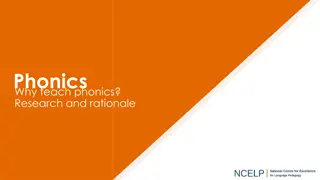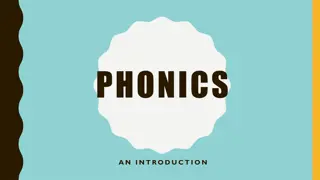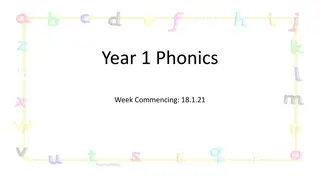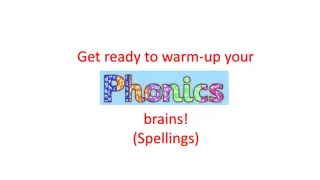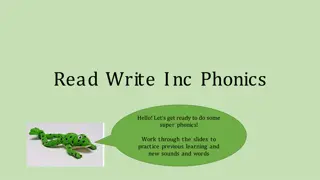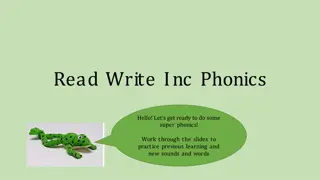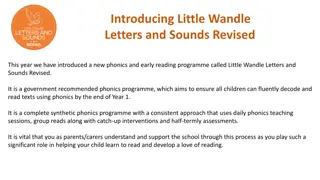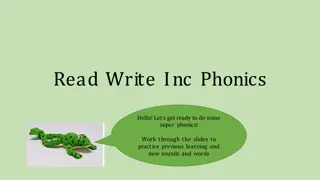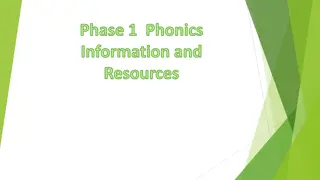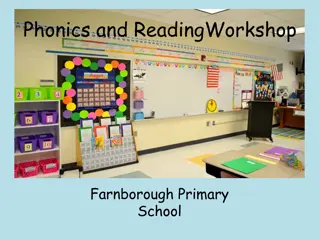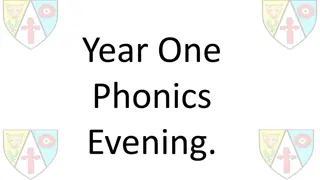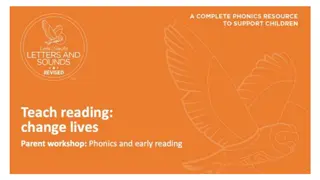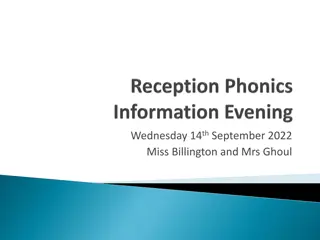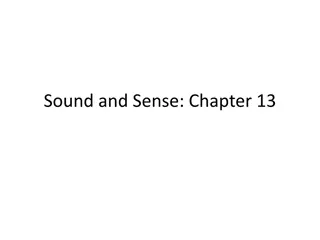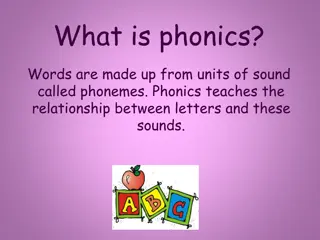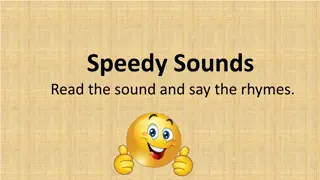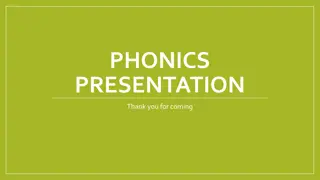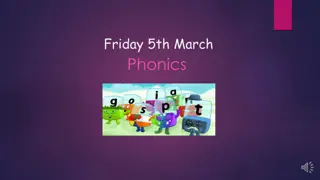Explore Sounds Write Phonics Program in Year 1 Classroom
The Sounds Write phonics program in a Year 1 classroom focuses on teaching essential reading and writing skills like segmenting, blending, and phoneme manipulation. Through engaging learning experiences and daily practice, students develop fluency in reading and writing. The program includes activities on word building, sound swaps, and phoneme manipulation, helping children recognize different spellings for the same sounds and enhancing their overall literacy skills.
Download Presentation

Please find below an Image/Link to download the presentation.
The content on the website is provided AS IS for your information and personal use only. It may not be sold, licensed, or shared on other websites without obtaining consent from the author. Download presentation by click this link. If you encounter any issues during the download, it is possible that the publisher has removed the file from their server.
E N D
Presentation Transcript
Welcome to Year 1 Family Learning
The focus today will primarily be on exploring our phonics program Sounds Write.
What is Sounds Write? Sounds Write is a phonic rich program which focus' on teaching the 3 main skills required to successfully read and write. They are * segmenting - c/ a / t * blending * phoneme manipulation It is through repetition, exciting learning experiences, daily reading and writing that children in our school flourish as fluent readers and writers.
* A daily routine whereby all children explore lessons of word building, sounds swaps, reading and spelling of a focus sound that week for example /e/. We will demonstrate these for you shortly. * In year one we dive into the digraphs for which the children know as 'two letters representing one sound'. For example the /ee/ in sleep * A trigraph is 3 letters but one sound for example /igh/ in night. The children learn that these digraphs and later trigraphs can be found in many words with multiple representations. What does Sounds Write look like in a Year 1 classroom ?
* The children begin to learn that different spellings can represent the same sound for example the 'ee' in meet and the 'ea' in treat. We teach this by exposing the children to the sound through different spellings in a word building activity. We will teach you how to do this. Same sound different spellings
This activity teaches the children to identify sounds in words and how they are built together through the skill of segementing. Word builder We are going to build three words together. When we teach through word building we encourage the children to use gestures to help segment the sounds in a word.
Same sound different spellings Let s have a go!
Sound Swap Phoneme manipulation the skill of interchanging and swapping of sounds. Children learn sound and symbol correspondence through this activity. This is how a nonsense sound swap would be performed.
Same sound different spellings Let s have a go!
Seek the Sound An activity such as seek the sound is used with an age level appropriate reading text that is full of words using a particular focus sound. This activity is used once a new sound has been exposed through word building and children are to identify the multiple words by representing different spellings of that sound.
Tell Tell your child the first word eg; feet Ask your child to tell you the sounds they hear in the word feet eg; f/ee/t Ask Top tips on practicing th e spelling challenge words with your child at home Look at the word together, underline the sounds you see as you read f/ee/t then blend the word together feet. Look Go Go through the rest of the words in the same way. through Begin back Begin back at the top of the list by saying the sounds as you write the words firstly by segmenting 'f/ee/t' then by blending 'feet.' Repeat this again the next afternoon in the same way so your child becomes comfortable reading, writing and saying the sounds of their word list. Repeat Now challenge them! Tell them the word without looking this time and they will say the sounds as they write. Challenge
When reading with your child its important that we try to use visuals to identify sounds instead of saying it s the /e/ sound which is not the correct sound for that particular word or the letter e as this only leads to confusion. For example How can you provide extra support your child at home? Head -> the sounds would be /h/ /ea/ /d/ not /h/e/a/d. You are also encouraged to incorporate any of the demonstrated lessons shown into your home learning sessions or if that s too much turn it into a fun game for example memory. If your ever stuck or unsure of a sound in a word a trick to remember is to cover up the word say the word out loud and think about the sounds you hear!
To live through these activities we are welcoming you to join in a carrousel type activity focusing on the sound e with the following representations. /e/ /ee/ /ea/ /y/
Activities 1) Treasure or trash with words that are real or not real 2) Independent sorter 3) Learning spellings 4) Seek the sound
Parent support resources Udemy course for parents of the initial code free download Udemy course for parents of the extended code ( 19.99) Sounds write app for kids free download
https://www.sounds- write.co.uk/page-82-app-for- ipad.aspx https://www.udemy.com/course /help-your-child-to-read-and- write/ Links


